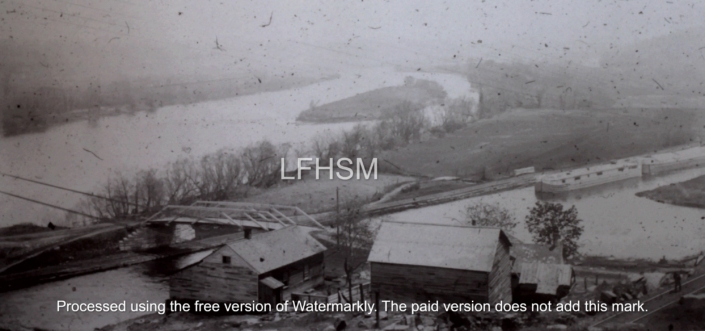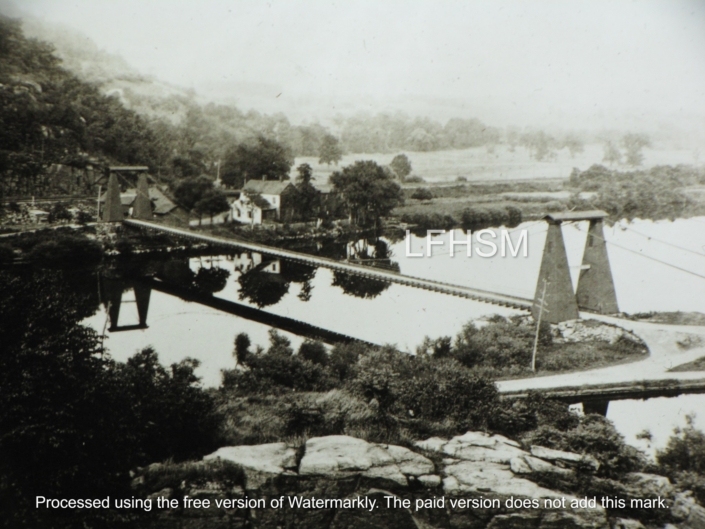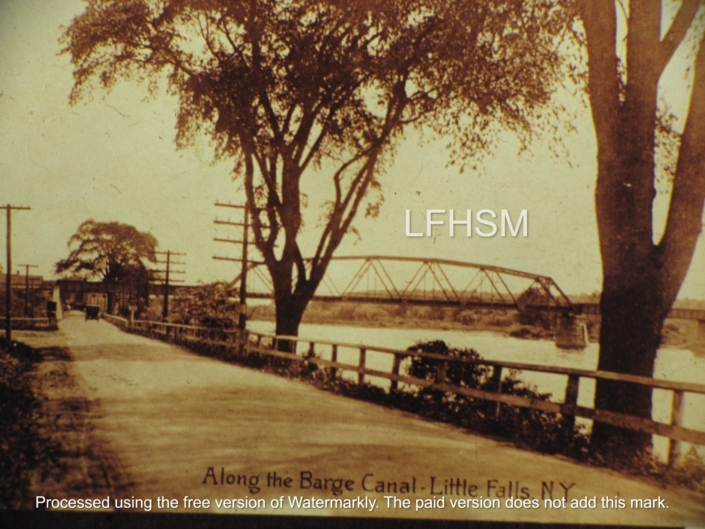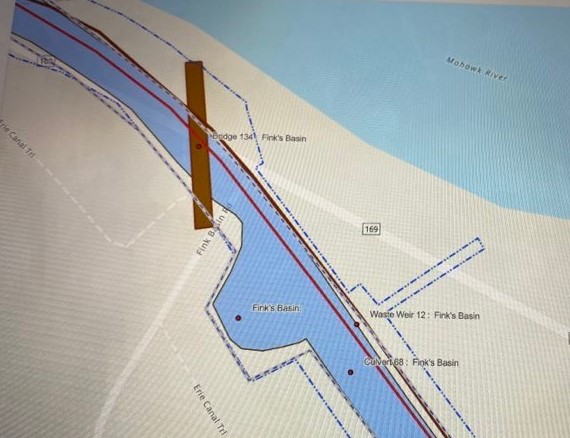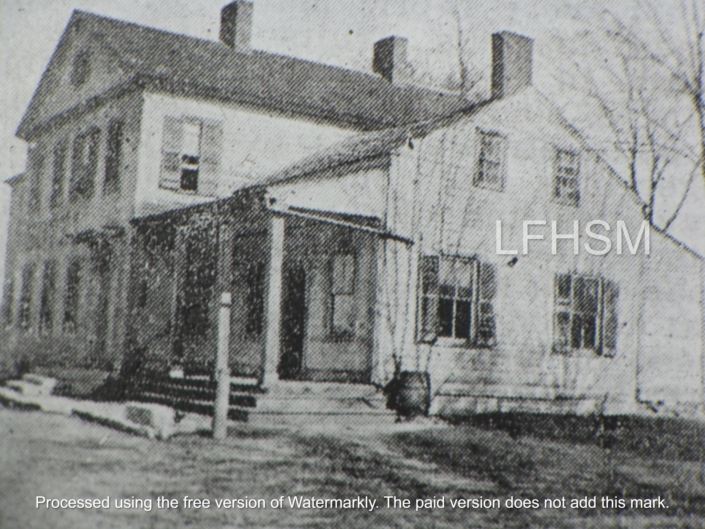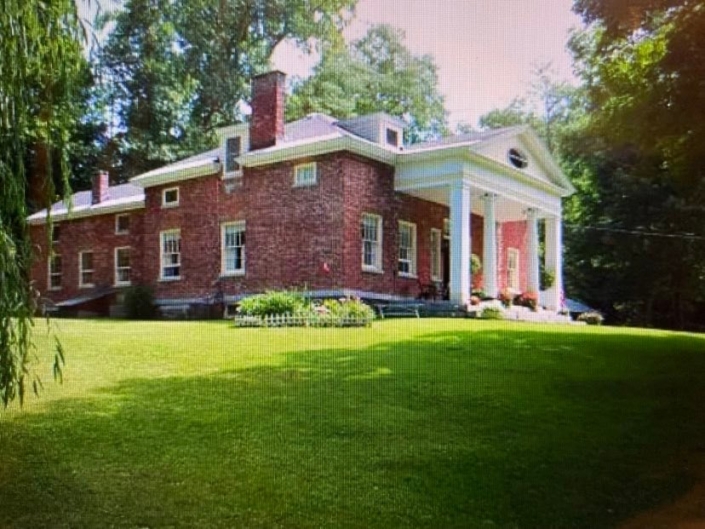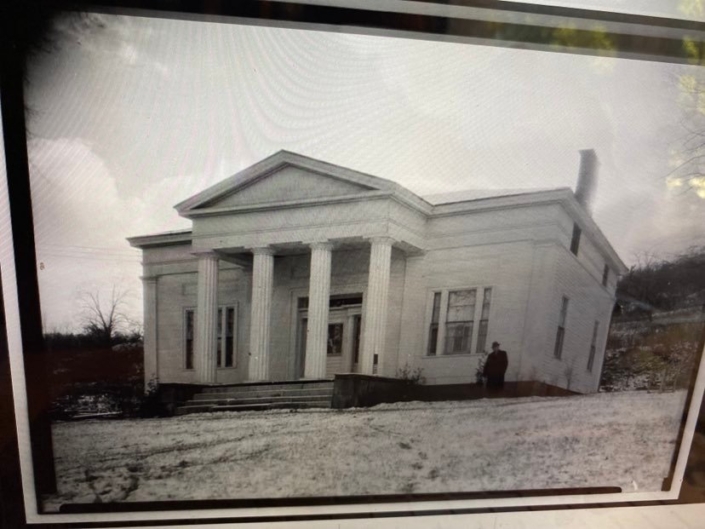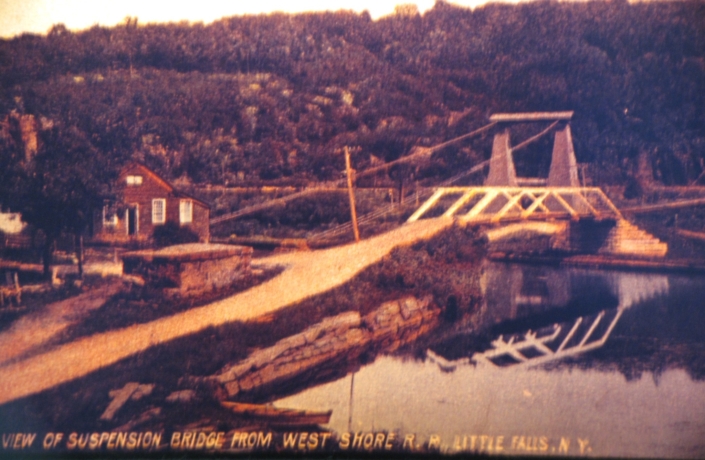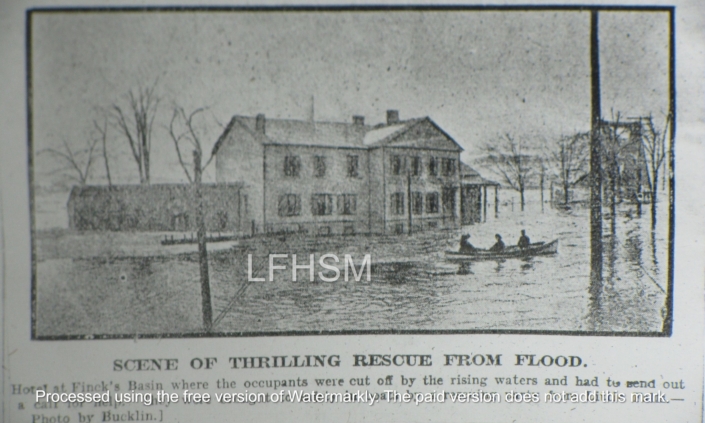ON MAY 11, 1869 Governor John T. Hoffman signed the “Fink’s Bridge Bill” much to the delight of the residents and friends living east of Little Falls.
May 11, 1869, Cooney Archives
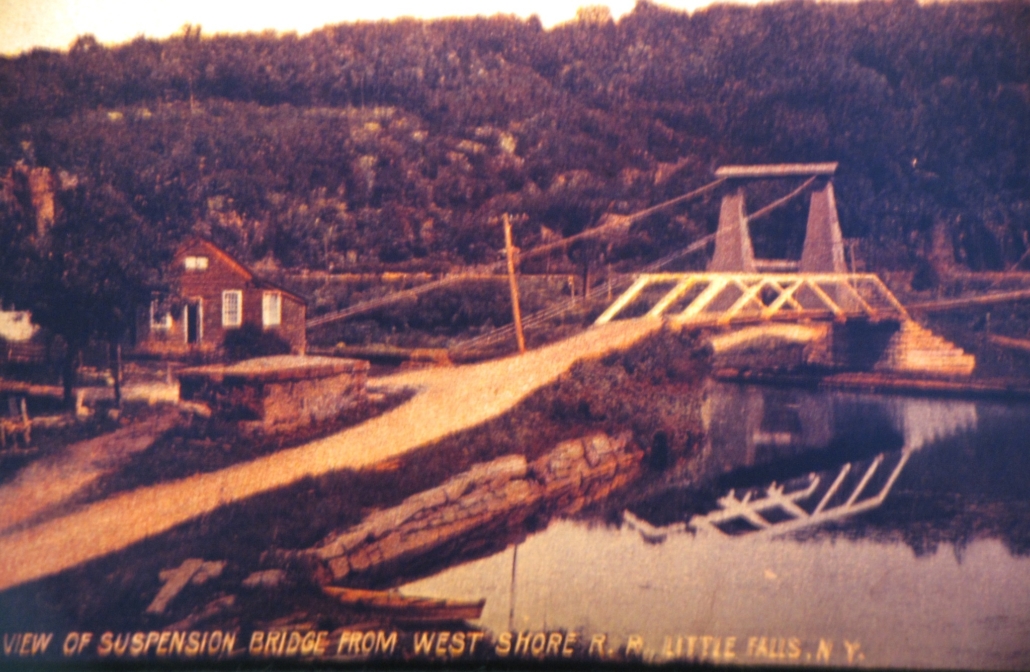
Circa 1900 Postcard | Showing the canal basin on the right
In 1828, an act was passed for a bridge to be built one mile east of Little Falls, at “Fink’s Ferry” by the “Manheim Bridge Company.” Andrew Acker Fink, son of Revolutionary War Major Andreas Fink, built the well known Fink’s Tavern on the Mohawk Turnpike Road, next to the Mohawk River in 1805. He also built the historic Greek Revival brick home on River Road in 1825, with purchasing the land from his brother Henry Fink, for $4,500 on November 16, 1825. The house was built on the north side of the Mohawk River, across from the General Herkimer Home. Another historic Greek Revival home was built by a member of the Fink family, on Finck’s Basin Road. The hamlet, ferry, bridges, and the canal basin are all named after the Palatine German, Major Andreas Fink.
As the bridge had not been built, the charter for a bridge to be built by the Manheim Bridge Company was revived and confirmed in 1834. The 1834 bridge received damage from ice and was replaced in 1862, with a charter being granted to the towns of Manheim, Danube and Little Falls, to erect a bridge at Fink’s Ferry at a cost of $9,000.
On March 16 of 1865, the Mohawk River rose fifteen feet, sweeping the three year old bridge away. The homes along the Mohawk River at Finks Basin were flooded, stranding many people. One such person in need of rescuing was an elderly Mrs. Van Etten, who had been bedridden for many years under physician’s orders due to consumption. When the boatmen had arrived to rescue her, she was found upon her bed, floating around her bedroom. She was placed upon a chair and taken to Little Falls for safety.
According to the Journal and Courier on March 21, 1865 … “an act was passed allowing the three towns named “to rebuild and repair” the bridge at an expense not exceeding $5,000, and to keep it in future repair at an expense not exceeding $1,000 in any one year, the sums thus expended to be equally assessed upon each of the three towns.
The Suspension bridge was built in the years of 1869-73. Authority for its building was given by the legislature on the 18th day of May, 1869, and the owners, the towns of Little Falls, Manheim and Danube, were given permission to borrow $15,000. The late Watts T. Loomis was the commissioner from Little Falls, Margon Bidleman was Manheim’s, and Levenus Devendorf was Danube’s. The report of the commission to the supervisors in November 1870, showed that the total cost would be $21,862.41, the commissioners becoming personally responsible for the deficit of $6,836.18. The abutments cost $5,106.27 and the cable, wire, ropes for stays, wire for suspenders and braces Cost $8,956.”
The builder for the bridge was Judge Theodore Graves Hulett. Hulett was a Judge, lawyer, and civil engineer from Buffalo, NY. He invented and patented the cast iron shackle fasteners that secured the cables. He also originated the idea of and the practice of cementation of the dead in 1886.
FROM THE JOURNAL AND COURIER Newspaper reported on TUESDAY, AUGUST 28, 1917:
“FINCKS BRIDGE BURNED | The Old Suspension Bridge a Complete Ruin—Great Loss and Inconvenience to South Side Residents—Had Stood Half a Century.
Soon after midnight Saturday the old suspension bridge at Fincks, one mile east of the city caught fire in one of the north towers, which soon spread to the other tower, so that the heavy wire cables dropped and the whole structure fell into the Mohawk river. The fire started in the ice house of Mrs. Elizabeth Smith, owner also of the Riverside hotel near by, and was discovered by Robert Benson, night watchman for the contractors who are building a new bridge to replace the suspension bridge which is not high enough to clear boats which will navigate the canalized river. Benson was at the time on the south side and tried to reach the north side to summon aid from Riverside hotel, but the flames acquired such rapid headway that the towers were consumed and the cables parted and let the bridge fall while he was in the center of the structure. He swam to the shore and notified the occupants of the hotel. Fred Snyder, the manager of the hotel, tells a somewhat different story and that he organized a bucket brigade before the cables snapped. He telephoned Chief Cooney who responded with the big fire truck and the firemen succeeded in saving the hotel. The ice house was about one-quarter full of ice, but little of which was melted.
Manager Snyder estimates his loss at about $500, which is covered by insurance. He is unable to tell anything as to the origin of the fire. Floyd Cramer and Arthur Steever, two Indian Castle boys who were returning from this city to their homes, remained too long on the bridge and went down into the water with their bicycles. Steever, sustained a bad cut and both lost their wheels.
The fall of this bridge at this time is most unfortunate, as it will compel all traffic to go over the Lovers Leap road, which is quite steep and in very bad condition.”
The State of NY removed the remnants of the Suspension Bridge when the Barge Canal was being built at Little Falls. By 1918, a replacement bridge had been built in its place, being built at a much higher height that allowed barges on the canalized Mohawk River to navigate under.
By 1973, the Little Falls Thruway Exchange Exit 29A was completed and the only way to reach the city was over the Finks Basin Bridge or up over Fall Hill on NYS Route 5s.
By 1974, the arterial through Little Falls was completed, with NYS Route 5 cutting through the southside of the city, which traveled east to west. The Theodore S. Wind Bridge that spans the canal and the Mohawk River was completed in 1981, allowing NYS Route 169 coming from the Thruway Exchange to intersect NYS Route 5, eliminating the need for the Finks Basin Bridge. It was removed in the early 1980s and River Road was soon closed, with the Town of Manheim not wanting the expense of maintenance, since a section of the road flooded regularly.
*Digitizing of Historical Photo by Gail & Mike Potter, From the Cooney Archives: This Day In History by Louis Baum, JR, Article written by Darlene Smith
Please view the video “Old Erie Canal Finks Basin Waste Weir. How OLD is this arch?” by Historic Erie 350 on You Tube- It is just amazing!! It can be found at : https://www.youtube.com/watch?v=k7XUFF6AFBE
To learn more about the severe flood of 1865 at Little Falls, please view ” The Little Falls Flood of March 16, 1865″ by David Krutz, that can be found at: https://littlefallshistoricalsociety.org/…/distant…/
WRITING SERIES “The Palatine Germans In A Search To Call Home” by Ginny Rogers, can be viewed at : https://littlefallshistoricalsociety.org/…/palatine…/
Please plan a visit to the museum to view the “Waterways Exhibit.” For those of you that can’t make it to the museum, the virtual ” 1795 Waterway’s Exhibit” can be viewed at: https://littlefallshistoricalsociety.org/…/little…/


